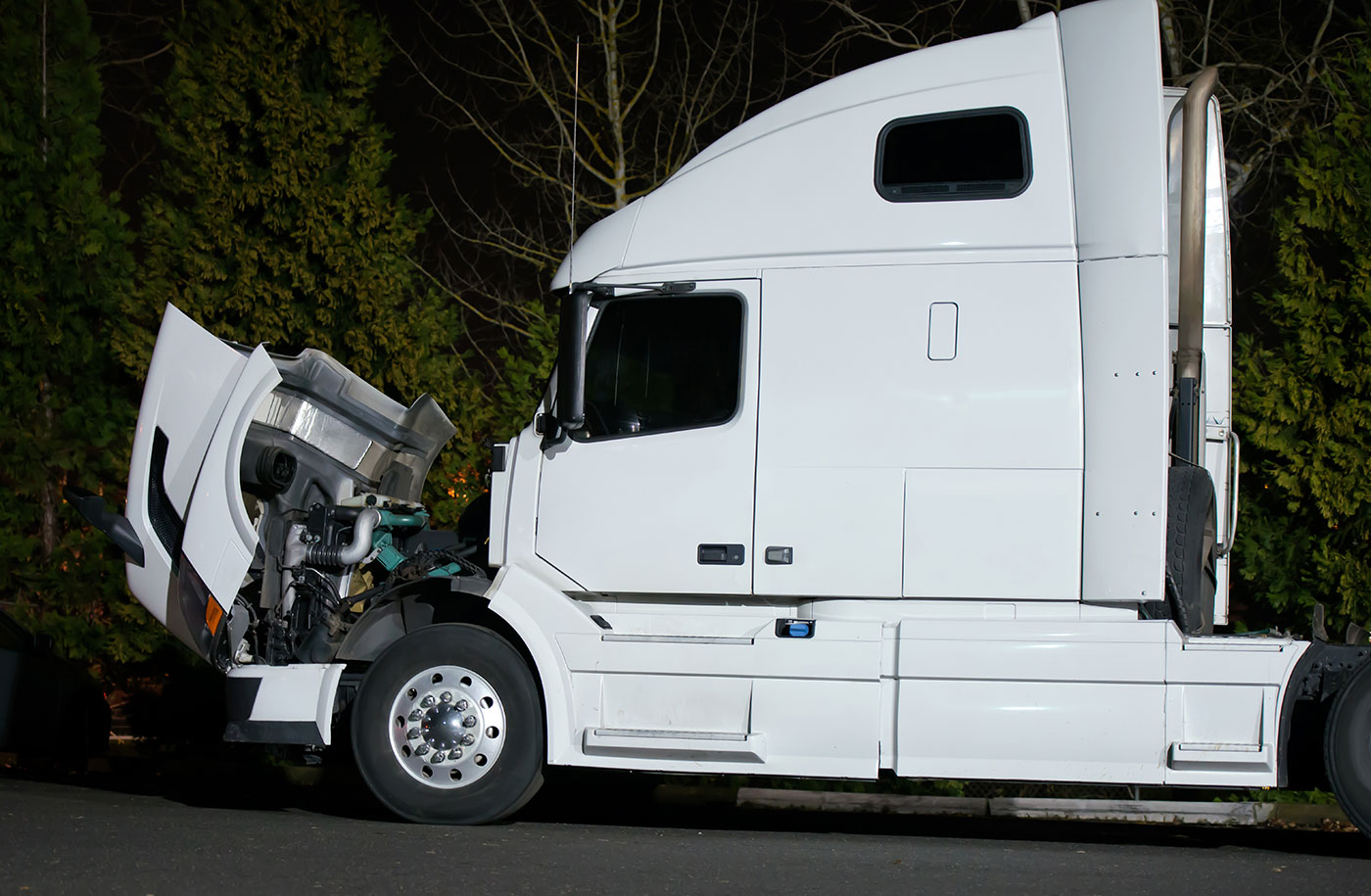Need help? We're here!
(888) 312-8812 Login SignupTrucking Pre-Trip Inspection Guide
July 19, 2018

July 19, 2018

As a professional driver, your pre-trip inspection is a critical step in ensuring your truck is road worthy before each long haul. The inspections should be quite comprehensive, and for some can be quite difficult to remember, especially if you're in pursuit of your commercial driver's license (CDL). To that end, we've compiled the essential steps a thorough pre-trip inspection should have.
The point of a thorough pre-trip inspection is to ensure that your vehicle's major components operate as intended. This inspection should be done at the start of each day, as well as once every 24 hours, after every 10-hour break and after you pick up a new trailer.
Before you begin make sure you have the necessary tools - gloves, flashlight and a hammer. Then check that the parking brakes are set and the transmission is in first gear. Driving an automatic? Be sure to place wheel chocks under the drive tires.
Next, you'll want to turn on your headlights, activate your brake lights and switch on your four-ways. Now you're ready to proceed through your pre-trip inspection:
Look under the hood and inspect the carriage for anything that shouldn't be there - road debris can easily get caught up here. Evaluate both sides of the engine, all of your hoses, wiring, reservoirs, filters, dryers and fluid levels. Thoroughly check your air dryer, alternator, brake air lines, brake chambers, slack adjusters, brake linings, brake drums, springs, spring mounts, shock absorbers, tires, tire pressure, tread depth, wheels, lug nuts, valve caps, hub oil, steering gear box and steering linkage.
Check the steps, on top of and underneath your cab for any unwanted items. Additionally, inspect your mirror, turn signal, lights, door, side skirting, steps, fuel tank/cap, reflectors and reflective tape, sleeper side, sleeper berth window glass and your DOT annual inspection sticker.
Here you'll want to check the chain and battery boxes, fuel tanks, exhaust and chassis. Evaluate airlines, electrical cords, the cab suspension system, cross members, frame, and drive shaft.
Check your body panels, lights, reflectors and reflective tape, as well as your airlines, electrical cord, and stickers (height and preventative maintenance).
Evaluate your release arm, fifth wheel mount, stop blocks, slide locking pins, fifth wheel pivot pins and pin locks, platform, apron, kingpin, gap and locking bar/jaw. Remember to use a flashlight when checking for correct coupling.
Check for unusual items on your wheels, brakes, tires and suspension. Take special care to check your tires for any abrasions, bulges or cuts. Be sure to also check the air pressure, tread depth, wheels, lug nuts, hub oil seals, valve caps, air lines, brake chambers, brake linings, slack adjusters, drums, linings, air bags, shock absorbers, springs, spring mounts, U-bolts, torque rods, splash guards and lights.
Check underneath and the sides of the trailer for any unwanted modifications. Check your lights, reflectors and reflective tape, landing gear, underside, frame, top and bottom rails, body panels, tandem release handle, locking pins and air lines.
Evaluate the wheels, brakes, tires, and suspension for any changes. Check tires, air pressure, tread depth, wheels, lug nuts, hub oil seals, valve caps, air lines, brake chambers, brake linings, slack adjusters, drums, linings, springs, spring mounts, shock absorbers, U-bolts, torque rods and air tanks.
Examine your seals, doors, hinges and bumper to check for anything unusual. Also check your lights, reflectors and reflective tape, doors, door seals, door chains, door hooks, hinges, latches, license plate, splash guards and seal or padlock.
Again, evaluate the wheels, brakes, tires, and suspension for any changes. Check tires, air pressure, tread depth, wheels, lug nuts, hub oil seals, valve caps, air lines, brake chambers, brake linings, slack adjusters, drums, linings, springs, spring mounts, shock absorbers, U-bolts, torque rods and air tanks.
Check underneath and the sides of the trailer for any unwanted modifications. Check your lights, reflectors and reflective tape, landing gear, underside, frame, top and bottom rails, body panels, tandem release handle, locking pins and air lines.
Check for unusual items on your wheels, brakes, tires and suspension. Take special care to check your tires for any abrasions, bulges or cuts. Be sure to also check the air pressure, tread depth, wheels, lug nuts, hub oil seals, valve caps, air lines, brake chambers, brake linings, slack adjusters, drums, linings, air bags, shock absorbers, springs, spring mounts, U-bolts, torque rods, splash guards and lights.
Again, heck your body panels, lights, reflectors and reflective tape, as well as your airlines, electrical cord, and stickers (height and preventative maintenance).
And again, you'll want to check the chain and battery boxes, fuel tanks, exhaust and chassis. Evaluate airlines, electrical cords, the cab suspension system, cross members, frame, and drive shaft.
Check the steps, on top of and underneath your cab for any unwanted items. Additionally, inspect your mirror, turn signal, lights, door, side skirting, steps, fuel tank/cap, reflectors and reflective tape, sleeper side, sleeper berth window glass and your DOT annual inspection sticker.
Evaluating the latch, hood mirrors and mirror brackets, as well as the hood for any unwanted items.
Check your bumper, license plate, windshield and lights. Also check your headlights and markers. Remember to ensure the ID lights are operational and the lens is clean, and not cracked or broken.
Evaluate your clutch free play, accelerator, brake pedal, permit book and fire extinguisher/emergency kit.
You can now cancel your brake lights and four-ways. Then check your turn signal and high-beam indicators, check the gauges, steering free play, horn, heater and defroster, shift lever, windshield wipers and washer and your in-cab air brake tests.
After checking off every item on this list, you'll now know that your rig is in tip top, road ready shape. Drive safe, truckers!